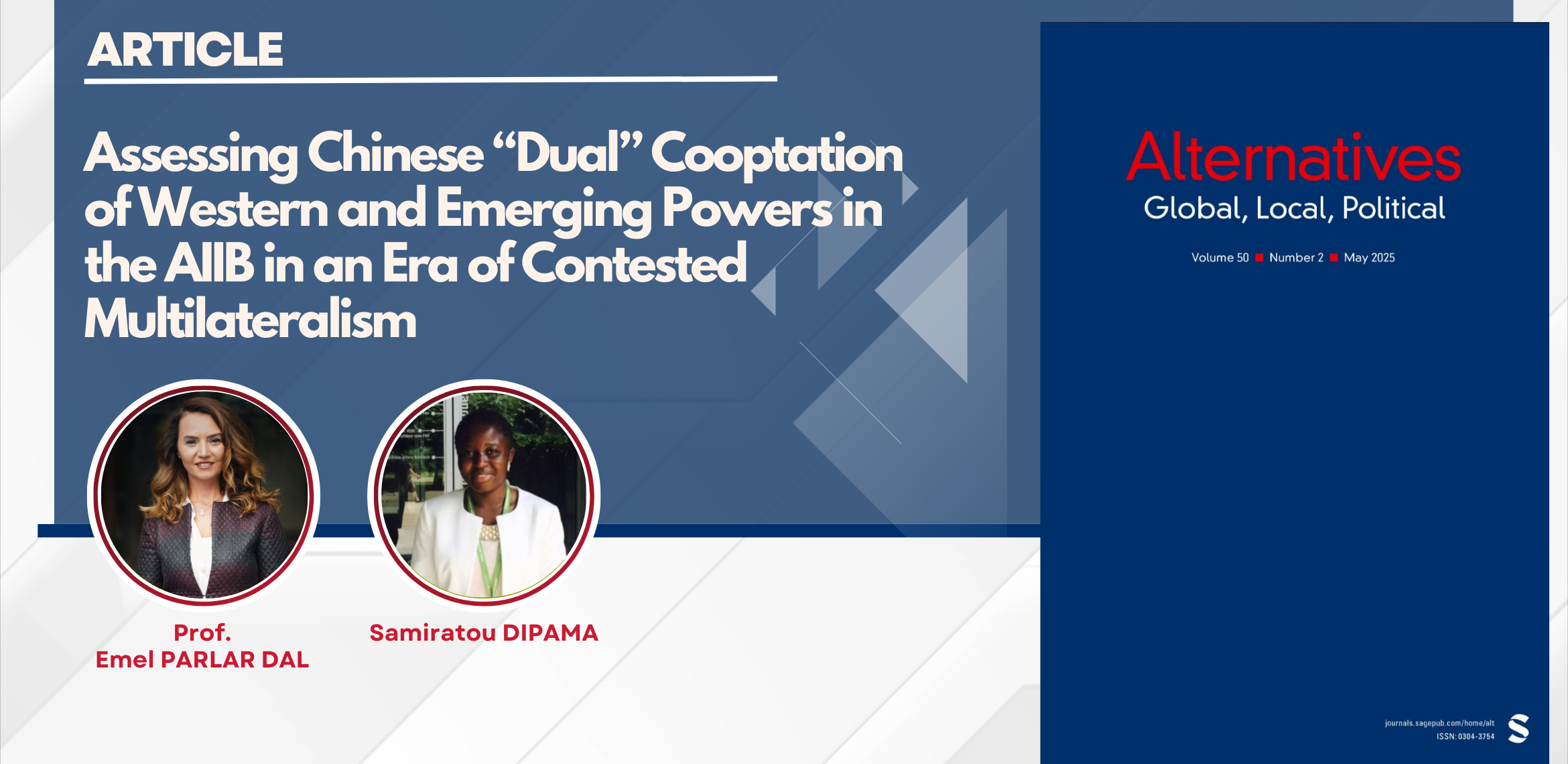
Faculty member of our department Prof. Emel Parlar Dal and Samiratou DIPAMA have published their article titled “Ussessing Chinese “Dual” Cooptation of Western and Emerging Powers in the AIIB in an Era of Contested Multilateralism” in the OnlineFirst edition of Alternatives: Global, Local, Political.
Why and how do emerging powers, namely China, engage in cooptation of established powers and emerging peers through the creation of alternative competitive institutions? This paper endeavors to evaluate China’s cooptation as a response to increasing great power competition in this era of waned multilateralism. Basing the analysis on the case of China’s “dual” cooptation of emerging and Western powers in the Asian Infrastructure and Investment Bank (hereafter AIIB), this study seeks to integrate insights from the literature on contested multilateralism, contributing to the intersection of these two scholarly domains (Cooptation and Contested multilateralism). This paper argues that China’s cooptation through the AIIB has been mainly informed by the growing sentiment of its under-representation in legacy institutions, namely the IMF and the World Bank and by its need for upgraded status. The power-asymmetry between China and the coopted Western powers in the AIIB, has been narrowed gradually as the result of the grant of some institutional and material privileges to established and emerging powers in the AIIB and both China and the cooptees expect some significant transformations in the behavior of each other. Consequently, both China and the coopted parties anticipate significant alterations in each other’s behavior. The cooptation strategy employed by China, exemplified in the case of AIIB, has been favorably received by a substantial number of cooptees. This approach has enabled China to cultivate allies and legitimize its institutional-building efforts, particularly in the face of initial staunch opposition from the United States. The paper contends that Chinese cooptation through the AIIB generate differing results on the triple levels of transformative anticipations, namely behavior, interest and identity.
To access the article, please click here.
